Mount Ego
Caspar Berger, Karin van Dam, Johan Tahon, Hartmut Wilkening, Christiaan ZwanikkenMount Ego combineert de specifieke talenten van 5 kunstenaars die reeds een aantal jaren voor verrassende beelden zorgen. De getoonde, nieuwe installaties zijn niet zozeer een zijstap in hun oeuvre als wel een toetsing van hun artistieke opvattingen met de rauwe binnenarchitectuur van de achterzaal.
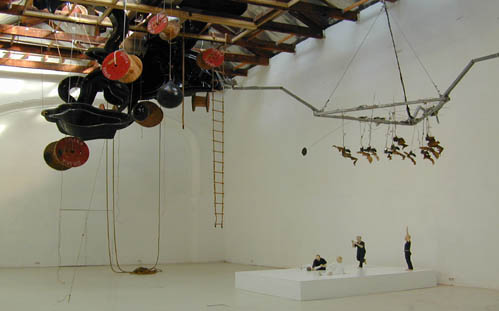

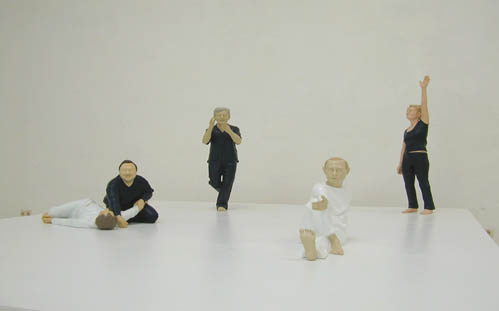
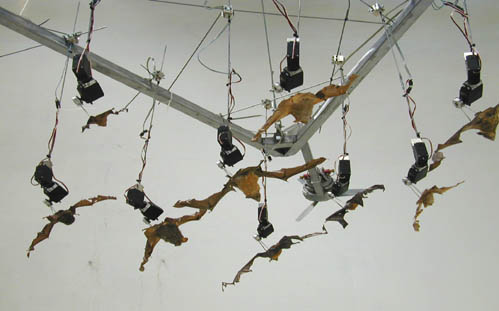
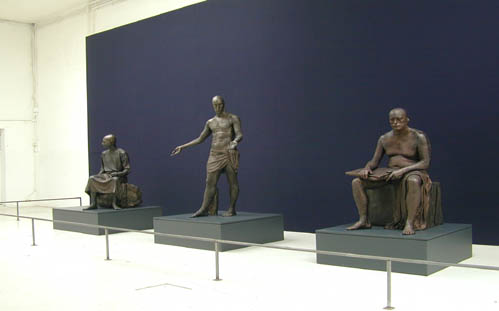

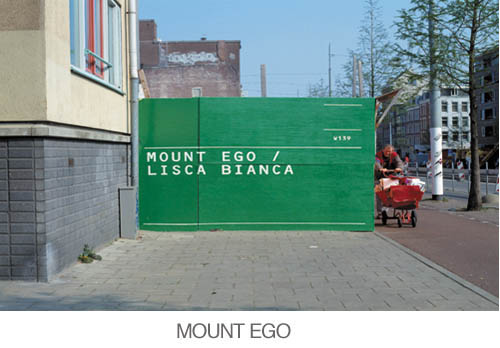
Mount Ego combines the specific talents of 5 artists who have been producing striking images for a number of years. These new installations aren't excursions out of their practice, more a way of testing their artistic views against the raw interior architecture of the rear space. The basic idea is simple vertical programming. The idea is to use the unique, enormous height of the rear space (probably around 12 metres at its highest point) and try to tame it. So W139 invited 3 artists who don't balk at serious ceiling work. They all conceived a new work to tackle the task; the resulting works fit seamlessly into the recent physical tradition of W139 site-specific productions.
To review this redefinition of the rear space's domestication from a human perspective, the exhibition has been extended to include 3 different contemporary views of the classic human figure. The eye of the viewer is taken on a vertical journey from the floor to the uppermost rafter). The title of the show refers both to an impossible mountain and to human uniqueness.
Karin van Dam, a three-dimensional draughtsman, has used industrial materials like pipes, black plastic tubs and garden swimming pools, rubber mats, cable bobbins and insulation material to create a monumental gesture. The hanging sawn-out sections tumble over each other from the ceiling in a dark waterfall of form and rhythm. But in spite of the heavy materials and colours, the piece has a playfulness that overshadows the gravity-defying thundercloud.
Hartmut Wilkening is a sculptor primarily interested in the how body language works in newspaper images of politicians. In the installation Warming Up, he presents 3D freeze frames of eight political heavyweights cut back to half their original height. All barefoot and comfortably dressed, they practice eastern relaxation exercises. Poetin does Yoga, Guy Verhofstadt practices an Indian laughter exercise and Wallonian Prime Minister Jean-Claude van Cauwenberghe treats Tony Blair to a classic shiatsu stretch. Apart from being European and baby boomers, none are born politicians. Poetin began in the secret service, Sabine Christiansen spent seven years as a stewardess before entering political journalism and the German minister of Foreign Affairs, Joschka Fischer, was a long-term taxi driver.
Wilkening's precision as an image-maker, the colourful figures and decision to portray the protagonists of European power, make his work at once clear and mysterious. It's strange to see the impenetrable psyches of politicians captured in relaxed poses, no taller than a child.
Caspar Berger has been working with similar precision for years on a series of human figures in wax. Where they may have been anonymous figures before, whose significance or identity was bound in their bodies, now the emphasis is on portraits. The titles of the pieces are dead give-away: 'Moses' 'Risen Christ' and 'Judas'. They're based on existing statues or paintings and refer to specific bible stories. The images play with the language of Italian religious artworks, but their combination lends them a political-religious charge. The choice of accessories, poses and references to the period in which they originated plays an important part. By referring to these icons from western Christian culture and imagery, the installation as a whole is imbued with an unusual flavour. Risen Christ averts his gaze, has no stigmata, and Judas poses as one who has completed his task(as described in the book The evangelism of Jesus Christ by Jose Saramago). The presentation is very formal, referring to classic museum models , but we could also encounter similar figures on the street. A contemporary altarpiece.
Johan Tahon also works with classical sculptors and intermediary materials like plaster and resin. He also makes casts, not of a reality like Berger's images, but of the subject. A dormant frame of mind ,the animal within waiting to break free it flees on powerful legs, but can't help stumbling. His images look and quest and have little inner peace. For MOUNT EGO, Tahon created a 3.5 metre blue figure in epoxy resin that is almost transparent. But this subjective man peers into the heavens, longing for identity despite , or perhaps because of , his height, his 2 heads and 3 legs. Tahon's work has a strikingly tempered beauty but beneath the broken anatomy beneath the skin hides unease and human tragedy.
Christiaan Zwanikken breathes new life into ten stuffed Indonesian bats. A kinetic sculptor, he has the skills to allow the creatures to fly every which way. He has built a triangular construction that dangles freely in space from a cable suspended from the ceiling. The object can negotiate the space powered by three computer-powered propellers attached to the corners. The stuffed bats take shape as the contraption moves , they can fly independently and respond interactively to the uncontrolled moves of their triangular metal 'Mother Bat'. But do they fly aimlessly in search of food or in search of acknowledgement as living entities. Or are they fruitlessly trying to escape their electronic umbilical cord?
Zwanikken the artist is a genuine creator, the creatures have been resurrected. Their long-dead parchment wings have gained new life. 'MOUNT EGO' is an exciting presentation in which the commonalities of the works and the artists are not rooted in formal or intrinsic models but in detailed lines , from animals to people to abstraction, to colour, materials and meanings. Eye to eye with one of today's politicians in miniature, historical biblical figures, a limpid clumsy giant while rows of mean little teeth gnaw their way through heavy black plastic swimming pools drooping from the ancient wooden beams of W139.
Designpolitie made a physical invitation for this show, a part of the series of invitations for W139 that year that appeared throughout Amsterdam.